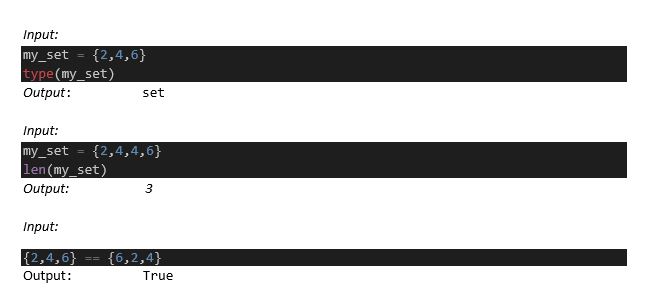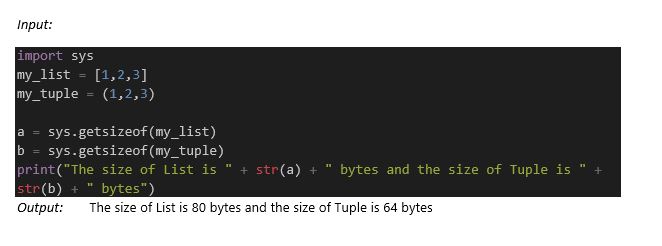Python – Data Structures I
Data structures in Python are containers that hold and organize data in a specific format. They provide efficient ways to store, access, and manipulate data. Some commonly used data structures in Python include lists, tuples, dictionaries, and sets.
1. Lists
Lists are mutable, ordered sequences that can store elements of different data types. They provide a flexible way to group and manipulate data, allowing for dynamic resizing, appending, and removing elements as needed. Lists in Python are usually enclosed in square brackets [ ] .
The order of elements in a list in Python is significant. That is, in a list, the elements are stored and accessed in the same order they were added, allowing for indexing, and maintaining the sequence of items.

2. Sets
Sets in Python are unordered collections of unique elements. They are defined using curly braces { }. Sets are useful for tasks such as removing duplicates from a list, testing membership of an element, and performing mathematical set operations like union, intersection, and difference.
The order of elements in sets is not guaranteed or significant. Sets in Python are implemented using hash tables, which means they are unordered collections. The focus of sets is on uniqueness and efficient membership testing, rather than preserving a specific order of elements.

3. Tuples
Tuples in Python are ordered, immutable sequences that can store elements of different data types. They are defined using parentheses ( ) or can be created without parentheses by separating the elements with commas. Tuples are often used to represent related data that should not be modified, such as coordinates, database records, or multiple return values from a function.

NOTE: Then what is the difference between list and tuples?
The answer is simple –
A list is mutable, meaning its elements can be modified, added, or removed, while a tuple is immutable, and its elements cannot be changed after creation. Additionally, the list uses slightly more memory due to its ability to dynamically resize, whereas the tuple has a fixed size. The below snippet of code reveals this.

4. Dictionaries
Dictionaries in Python are unordered collections of key-value pairs, where each key is unique. They are defined using curly braces { } . Dictionaries provide fast access to values based on their associated keys and are commonly used for tasks such as mapping, indexing, and storing related information.
